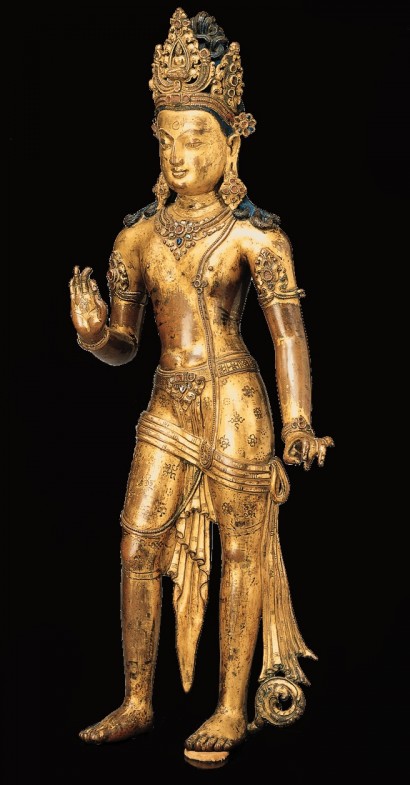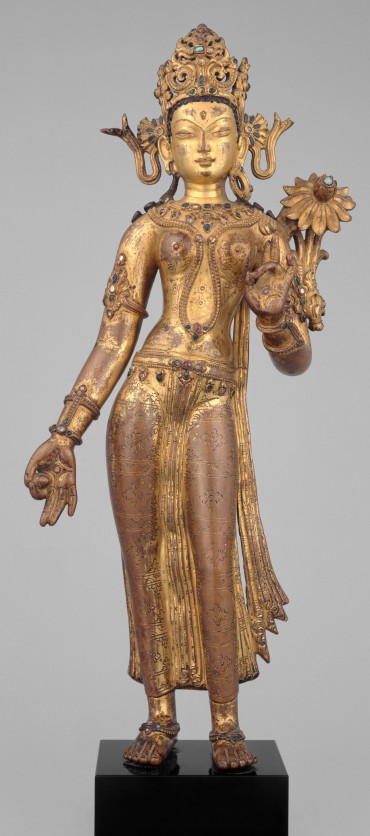Nepal, Transitional period, late 10th–early 11th century; gilt copper alloy with inlays of semiprecious stones; 26 3/4 x 11 1/2 x 5 1/4 in.; Asia Society, New York, Mr. and Mrs. John D. Rockefeller 3rd Collection, 1979.47, photo: Susumu Wakisaka, Idemitsu Museum of Arts, Tokyo, Courtesy of Asia Society, New York.
Tara, the Buddhist Savior
Nepal, 14th century; gilt copper alloy with color, inlaid with semiprecious stones; 23 1/4 x 10 1/2 x 5 in.; The Metropolitan Museum of Art, Louis V. Bell Fund, 1966, 66.179, photo: www.metmuseum.org.
In essence, all of the figures in the Mahayana Buddhist pantheon embody compassion, a fundamental ideal in this spiritual tradition. But bodhisattvas each have a specific role: limitless compassion is Avalokiteshvara’s special characteristic. A female deity known as Tara—seen here in a Nepalese sculpture that closely resembles the depiction of Avalokiteshvara on the left—also embodies this quality. According to Himalayan traditions, Tara was born from the male bodhisattva’s compassionate tears, and in some contexts, she is his consort and attendant. Tara is independently venerated as well; worshippers often supplicate her for protection. Like Avalokiteshvara, the lotus is her most characteristic attribute.





